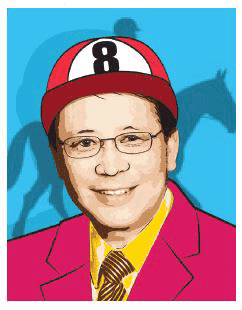Proust questionnaire: Kenneth Fung, MD

What profession might you have pursued, if not medicine?
Jockey.
Which talent would you most like to have?
To read people’s minds.
What do you consider your greatest achievement?
Resisting the temptation to purchase a Ferrari.
Who are your heroes?
My mother, my father, and Sir Thomas More.
What is your idea of perfect happiness?
Serving at a funeral mass.
What is your greatest fear?
Running out of air while scuba diving.
What is the trait you most deplore in yourself?
Procrastination.
What characteristic do your favorite patients share?
They do not seek a third opinion.
What is your favorite activity?
Fast-paced walking during a sunset.
Which words or phrases do you most overuse?
I have a serious reservation…
What technological medical advance do you most anticipate?
Star Trek–type of handheld diagnostic scanner.
What is your most marked characteristic?
A sense of comedianship.
What do you most value in your colleagues?
Being available when I need help.
Who are your favorite writers?
Confucius, Augustine of Hippo, Thomas Aquinas.
What is your greatest regret?
I did not get inside the pyramids of Giza.
How would you like to die?
A happy death.
What is your motto?
Forgive and forget.
hidden
Dr Kenneth Fung is a physician and a health care consultant. Dr Fung graduated from the University of Manitoba and began his medical career in Winnipeg. He settled in Vancouver a few years later, obtained the master of health administration degree from UBC, and became a clinical associate professor in the School of Public and Population Health at UBC.
